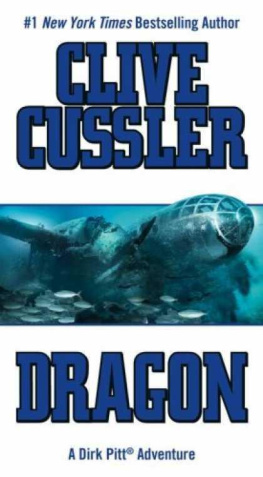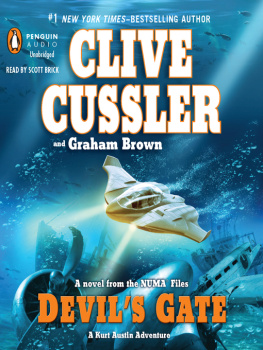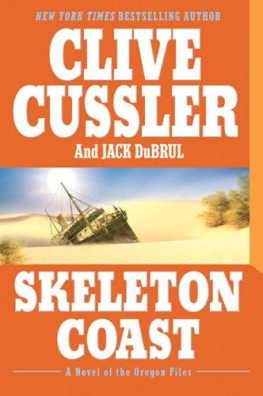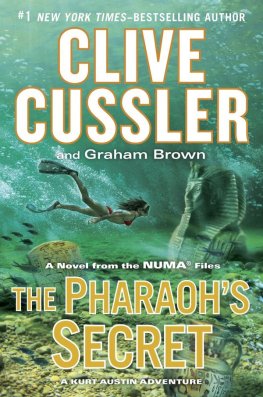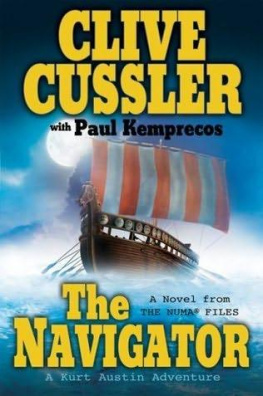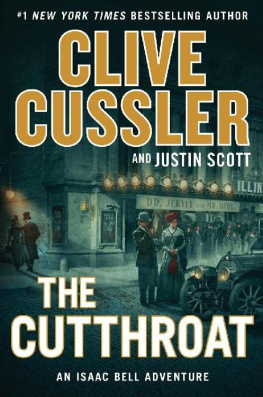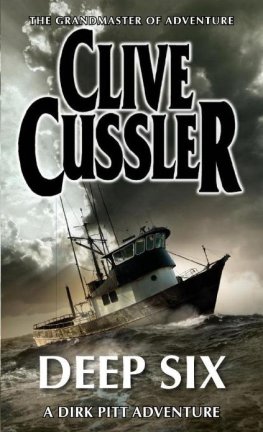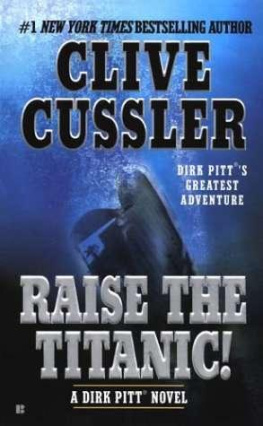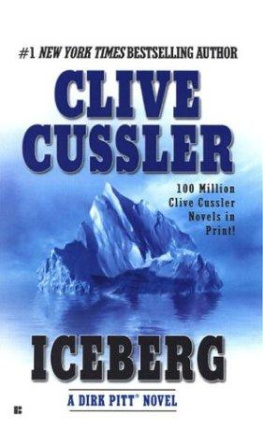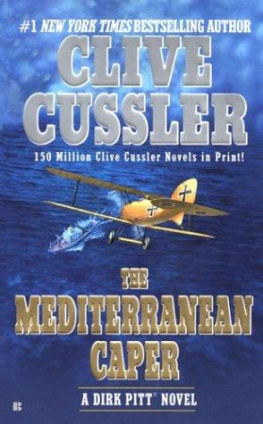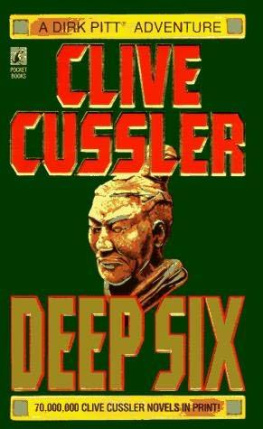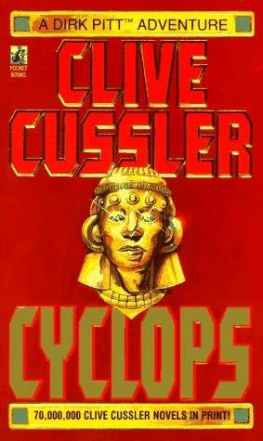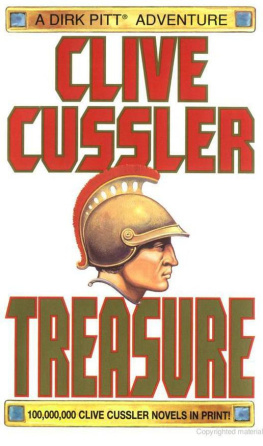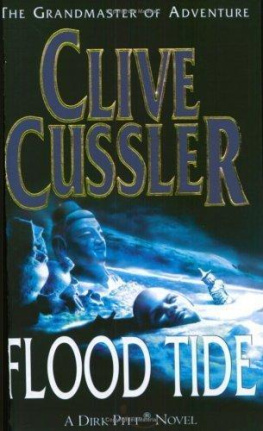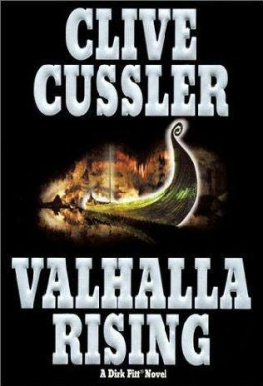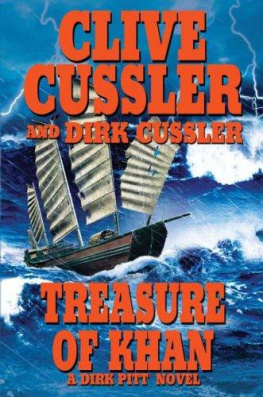Clive Cussler - Dirk Pitt 10 Dragon
Here you can read online Clive Cussler - Dirk Pitt 10 Dragon full text of the book (entire story) in english for free. Download pdf and epub, get meaning, cover and reviews about this ebook. year: 2006, publisher: Pocket Books, genre: Detective and thriller. Description of the work, (preface) as well as reviews are available. Best literature library LitArk.com created for fans of good reading and offers a wide selection of genres:
Romance novel
Science fiction
Adventure
Detective
Science
History
Home and family
Prose
Art
Politics
Computer
Non-fiction
Religion
Business
Children
Humor
Choose a favorite category and find really read worthwhile books. Enjoy immersion in the world of imagination, feel the emotions of the characters or learn something new for yourself, make an fascinating discovery.
- Book:Dirk Pitt 10 Dragon
- Author:
- Publisher:Pocket Books
- Genre:
- Year:2006
- Rating:5 / 5
- Favourites:Add to favourites
- Your mark:
- 100
- 1
- 2
- 3
- 4
- 5
Dirk Pitt 10 Dragon: summary, description and annotation
We offer to read an annotation, description, summary or preface (depends on what the author of the book "Dirk Pitt 10 Dragon" wrote himself). If you haven't found the necessary information about the book — write in the comments, we will try to find it.
Dirk Pitt 10 Dragon — read online for free the complete book (whole text) full work
Below is the text of the book, divided by pages. System saving the place of the last page read, allows you to conveniently read the book "Dirk Pitt 10 Dragon" online for free, without having to search again every time where you left off. Put a bookmark, and you can go to the page where you finished reading at any time.
Font size:
Interval:
Bookmark:
Dragon
Clive Cussler
Dragon
by Clive Cussler
Series: Dirk Pitt, Book 10
Publisher: Pocket (October 31, 2006)
ISBN-10: 1416537805
ISBN-13: 978-1416537809
August 6, 1945Shemya Island, AlaskaThe devil clutched a bomb in his left hand, a pitchfork in his right, and smirked impishly. He might have appeared menacing if it wasn't for the exaggerated eyebrows and the half-moon eyes. They gave him more of a sleepy gremlin look than the fiendish expression expected from the ruler of hell. Yet he wore the customary red suit and sprouted regulation horns and long forked tail. Oddly, the clawlike toenails of his feet were curled over a gold bar that was labeled 24 K.In black letters above and below the circled figure on the fuselage of the B-29 bomber were the words Dennings' Demons.The aircraft, named for its commander and crew, sat like a forlorn ghost under a sheet of rain driven southward over the Aleutian Islands by a wind from the Bering Sea. A battery of portable lights illuminated the area beneath the open belly of the plane, casting wavering shadows from the ground crew on the glistening aluminum body, Flashes of lightning added to the haunting scene, stabbing the darkness of the airfield with disturbing frequency.Major Charles Dennings leaned against one of the twin tires of the starboard landing gear, hands shoved deep into the pockets of his leather flight jacket, and observed the activity around his aircraft. The entire area was patrolled by armed MP's and K-9 sentries. A small camera crew recorded the event. He watched with uneasy trepidation as the obese bomb was delicately winched into the modified bomb bay of the B-29. It was too large for the bomber's ground clearance and had to be hoisted out of a pit.During his two years as one of the top bomber pilots in Europe, with over forty missions to his credit, he had never laid eyes on such a monstrosity. He saw it as a gigantic overinflated football with nonsensical boxed fins on one end. The round ballistic casing was painted a light gray, and the clamps that held it together around the middle looked like a huge zipper.Dennings felt menaced by the thing he was to carry nearly three thousand miles. The Los Alamos scientists who assembled the bomb at the airstrip had briefed Dennings and his crew the previous afternoon. A motion picture of the Trinity test explosion was shown to the young men, who sat stunned in disbelief as they viewed the awesome detonation of a single weapon with the power to crush an entire city.He stood there another half hour until the bomb-bay doors were swung closed. The atom bomb was armed and secure, the plane was fueled and ready for takeoff.Dennings loved his aircraft. In the air he and the big complex machine became as one. He was the brain, it was the body, a unity he could never describe. On the ground it was another story. Exposed by the shining lights and beaten by the rain that became sleet-cold, he saw the beautiful ghostlike silver bomber as his crypt.He shook off the morbid thought and hurried through the rain to a Quonset but for his crew's final briefing. He entered and sat down next to Captain Irv Stanton, the bombardier, a jolly round-faced man with a great walrus mustache.On the other side of Stanton, his feet stretched out in front of him, slouched Captain Mort Stromp, Dennings' co-pilot, a complacent southerner, who moved with the agility of a three-toed sloth. Immediately behind sat Lieutenant Joseph Arnold, the navigator, and Navy Commander Hank Byrnes, the weapons engineer, who would monitor the bomb during the flight.The briefing led off with an intelligence officer unveiling a display board showing aerial photographs of the targets. The industrial section of Osaka was the primary target. The backup, in case of heavy cloud cover, was the historic city of Kyoto. Directional bomb runs were advised as Stanton calmly made notes.A meteorology officer displayed weather charts and predicted light headwinds with scattered clouds over the targets. He also warned Dennings to expect turbulence over northern Japan. Just to be on the safe side, two B-29s had taken off an hour earlier to scout ahead and report visual assessments of weather over the flight route and cloud cover above the targets.Dennings took over as polarized welder's goggles were passed around. I won't give you a locker-room pep talk, he said, noting the relieved grins on the faces of his crew. We've had a year of training crammed into one short month, but I know we can pull this mission off. In my humble opinion you're the best damned flight crew in the Air Force. If we all do our jobs, we may well end the war.Then he nodded at the base chaplain, who offered a prayer for a safe and successful flight.As the men filed out toward the waiting B-29, Dennings was approached by General Harold Morrison, special deputy to General Leslie Groves, head of the Manhattan bomb project.Morrison studied Dennings for a moment. The pilot's eyes showed a weariness around the edges, but they glowed with anticipation. The general held out his hand. Good luck, Major.Thank you, sir. We'll get the job done.I don't doubt it for a second, said Morrison, forcing a confident expression. He waited for Dennings to reply, but the pilot had gone silent.After a few awkward moments, Dennings asked, "Why usGeneral?"Morrison's smile was barely visible. "You want to back outNo, my crew and I will see it through. But why us? he repeated. Excuse me for saying, sir, but I can't believe we're the only flight crew in the Air Force you'd trust to fly an atomic bomb across the Pacific, drop it in the middle of Japan, and then land at Okinawa with little more than fumes in the fuel tanks.It's best you know only what you've been told.Dennings read foreboding in the older man's eyes and voice. `Mother's Breath.' He repeated the words slowly, without tone, as one would repeat the name of some unspeakable terror. What warped soul came up with such a cockamamie code name for the bomb?Morrison made a resigned shrug. I believe it was the President.Twenty-seven minutes later, Dennings gazed past the beating windscreen wipers. The rain had increased, and he could only see two hundred yards through the wet gloom. Both feet pressed the brakes as he ran the engines up to 2,200 rpm's. Flight Engineer Sergeant Robert Mosely reported number-four outboard engine turning over fifty revolutions slow. Dennings decided to ignore the report. The damp air was no doubt responsible for the slight drop. He pulled the throttles back to idle.In the co-pilot's seat to the right of Dennings, Mort Stromp acknowledged the control tower's clearance for takeoff. He lowered the flaps. Two of the crew in the waist turrets confirmed the flap setting.Dennings reached over and switched on the intercom. Okay, guys, here we go.He eased the throttles forward again, compensating for the tremendous torque by slightly advancing the left engines over those on the right. Then he released the brake.Fully loaded at 68 tons, Dennings' Demons, her tanks filled to their filler caps with over 7,000 gallons of fuel, her forward bomb bay holding a six-ton bomb, and carrying a crew of twelve, began to roll. She was nearly 17,000 pounds overweight.The four 3,350-cubic-inch Wright Cyclone engines strained at their mountings, their combined 8,800 horsepower whipping the 16.5-foot propellers through the wind-driven sheet of water. Blue flame erupting from exhaust manifolds, wings enveloped in a cloud of spray, the great bomber roared into the blackness.With agonizing slowness she picked up speed. The long runway stretched out in front of her, carved out of the bleak volcanic rock and ending at an abrupt drop eighty feet above the cold sea. A horizontal bolt of lightning bathed the fire trucks and ambulances spaced along the runway in an eerie blue light. At eighty knots Dennings took full rudder control and advanced the right engines to their stops. He gripped the wheel grimly, determined to get the Demons in the air.Forward of the pilots, in the exposed nose section, Stanton the bombardier apprehensively watched the runway rapidly diminish. Even the lethargic Stromp straightened up in his seat, his eyes vainly attempting to penetrate the darkness ahead for the change in black where runway ended and the sea began.Three quarters of the runway passed, and she was still glued to the ground. Time seemed to dissolve in a blur. They all felt as though they w re flying into a void. Then suddenly the lights of the jeeps parked beside the end of the runway burst through the curtain of rain.God almighty! Stromp blurted. Pull her up!Dennings waited another three seconds, and then he gently eased the wheel toward his chest. The B-29's wheels came free. She had barely clawed thirty feet out of the sky when the runway vanished and she struggled over the forbidding water.Morrison stood outside the warmth of the radar but under the downpour, his four-man staff dutifully standing behind him. He watched the takeoff of Dennings' Demons more in his mind than his eyes. He saw little more than the lurch of the bomber as Dennings thrust the throttles forward and released the brakes before it was lost in the dark.He cupped his ears and listened to the engine's pitch diminish in the distance. The uneven sound was faint. No one but a master flight mechanic or an aircraft engineer could have caught it, and Morrison had served in both capacities during his early Army Air Corps career.An engine was slightly out of tune. One or more of its eighteen cylinders was not firing continuously.Fearfully, Morrison listened for some sign the bomber was not going to lift off. If Dennings' Demons crashed on takeoff, every living thing on the island would be incinerated within seconds.Then the radar man shouted through the open door, They're airborne!Morrison exhaled a tense sigh. Only then did he turn his back on the miserable weather and walk inside.There was nothing to do now but send a message to General Groves in Washington informing him that Mother's Breath was on her way to Japan. Then wait and hope.But down deep the general was troubled. He knew Dennings. The man was too stubborn to turn back with a bad engine. Dennings would get the Demons to Osaka if he had to carry the plane on his back.God help them, Morrison muttered under his breath. He knew with dread finality his part of the immense operation didn't stand a prayer.Gear up, ordered Dennings.Am I ever glad to hear those words, grunted Stromp as he moved the lever. The gear motors whined and the three sets of wheels rose into their wells under the nose and wings. Gear up and locked.As the airspeed increased, Dennings dropped the throttle settings to save on fuel. He waited before beginning a slow and gentle climb for altitude until the airspeed touched 200 knots. Unseen off the starboard wing, the Aleutian Island chain slowly curled northeast. They would not sight land again for 2,500 miles.How's that number-four engine? he asked Mosely.Pulling her share, but she's running a tad hot.Soon as we hit five thousand feet, I'll drop her back a few rpm's.Wouldn't hurt, Major, Mosely replied.Arnold gave Dennings the course heading they would maintain for the next ten and a half hours. At 4,900 feet Dennings turned control over to Stromp. He relaxed and stared into the black sky. No stars were in sight. The plane was feeling the turbulence as Stromp threaded it through the ominous mass of thunderclouds.When they finally cleared the worst of the storm, Dennings unbuckled himself and climbed out of his seat. As he twisted around, he could see through a port window below the tunnel leading to the waist and tail section of the plane. He could just make out a piece of the bomb suspended in its release mechanism.The crawl tunnel had been narrowed to receive the immense weapon into the bomb bay and was a tight fit. Dennings wiggled through past the bomb bay and dropped down on the opposite end. Then he swung open the small airtight door and slipped inside.Pulling a flashlight from a leg pocket, he made his way along a confined catwalk running the length of the two bomb bays that had been modified into one. The weapon's huge size made for an incredibly snug fit. Its outer diameter measured less than two inches away from the longitudinal bulkheads.Hesitantly, Dennings reached down and touched it. The steel sides felt ice cold to his fingertips. He failed to visualize the hundred thousand people it could burn to cinders within a short second, or the ghastly toll from burns and radiation. The thermonuclear temperatures or the shock wave from the Trinity test could not be sensed in a black-and-white movie film. He saw it only as a means of ending a war and saving hundreds of thousands of his countrymen's lives.Returning to the cockpit, he stopped and chatted with Byrnes, who was running through a schematic of the bomb's detonation circuits. Every so often the ordnance expert glanced at a small console mounted above his lap.Any chance of it going off before we get there? asked Dennings.Lightning strike could do it, answered Byrnes.Dennings looked at him in horror. A little late with a warning, aren't you? We've been flying through the middle of an electrical storm since midnight.Byrnes looked up and grinned. We could have gone up just as easily on the ground. What the hell, we made it, didn't we?Dennings couldn't believe Byrnes's matter-of-fact attitude. Was General Morrison aware of the risk?Better than anyone. He's been on the atomic bomb project from the beginning.Dennings shuddered and turned away. Insane, he thought, the operation was insane. It'd be a miracle if any of them lived to tell about it.Five hours into the flight and lighter by 2,000 gallons of expended fuel, Dennings leveled the B-29 off at 10,000 feet. The crew became more upbeat as the dawn's orange glow tinted the eastern sky. The storm was far behind them, and they could see the rolling swells of the sea and a few scattered white clouds.Dennings' Demons was cruising to the southwest at a leisurely 220 knots. Thankfully, they had picked up a light tail wind. Full daybreak showed them alone in the vast emptiness of the North Pacific Ocean. A solitary airplane going from nowhere to nowhere, Bombardier Stanton mused as he gazed absently out the windows of the nose.Three hundred miles from Japan's main island of Honshu, Dennings started a slow, gradual climb to 32,000 feet, the altitude at which Stanton would release the bomb on Osaka. Navigator Arnold announced they were twenty minutes ahead of schedule. At the current rate of speed, he figured they should be landing at Okinawa in a shade under five hours.Dennings looked at the fuel gauges. He suddenly felt cheerful. Barring a hundred-knot headwind, they should make it with four hundred gallons to spare.Not everyone was wallowing in good cheer. Seated at his engineer's panel, Mosely studied the temperature gauge of engine number four. He didn't like what he read. He routinely tapped the dial with his finger.The needle twitched and wavered into the red.He crawled aft through the tunnel and stared through a port at the underside of the engine. The nacelle was streaked with oil and smoke was trailing from the exhaust. Mosely returned to the cockpit and knelt in the narrow aisle between Dennings and Stromp.Bad news, Major. We're going to have to shut down number four.You can't prod her along for a few more hours? asked Dennings.No, sir, she can swallow a valve and catch fire at any minute.Stromp looked over at Dennings, his face somber. I vote we shut four down for a while and let it cool off.Dennings knew Stromp was right. They would have to maintain their present altitude and nurse the other three engines to keep them from overheating. Then restart number four during the ascent to 32,000 feet and the bombing run.He hailed Arnold, who was bent over his navigator's board tracing the flight path. How long before Japan?Arnold noted the slight drop in speed and made a swift calculation. One hour and twenty-one minutes to the mainland.He nodded. Okay, we'll shut number four until we need it.Even as he spoke, Stromp closed the throttle, flicked off the ignition switch, and feathered the propeller. Next he engaged the automatic pilot.For the next half hour everyone kept a wary eye on number four engine while Mosely called out the temperature drop.We have a landfall, announced Arnold. A small island coming up about twenty miles dead ahead.Stromp peered at it through binoculars. Looks like a hot dog sticking out of the water.Sheer rock walls, observed Arnold. No sign of a beach anywhere.What's it called? asked Dennings.Doesn't even show on the map.Any sign of life? The Nips could be using it as an offshore warning station.Looks barren and deserted, answered Stromp.Dennings felt safe for the moment. No enemy ships had been sighted, and they were too far from shore to be intercepted by Japanese fighters. He settled down in his seat and stared unseeing at the sea.The men relaxed and passed around coffee and salami sandwiches, immune to the droning engines and the tiny speck that appeared ten miles away and 7,000 feet above their port wingtip.Unknown to the crew of Dennings' Demons, they had only a few minutes to live.Lieutenant Junior Grade Sato Okinaga saw the brief glint from the reflected sun below him. He banked and went into a shallow dive for a closer inspection. It was an aircraft. No question. A plane from another patrol, most likely. He reached for the switch to his radio, but hesitated. In a few seconds he'd be able to make a positive identification.A young and inexperienced pilot, Okinaga was one of the lucky ones. Out of his recently graduated class of twenty-two, who were rushed through training during Japan's desperate days, he and three others were ordered to perform coastal patrols. The rest went into kamikaze squadrons.Okinaga was deeply disappointed. He would have gladly given his life for the Emperor, but he accepted boring patrol duty as a temporary assignment, hoping to be called for a more glorious mission when the Americans invaded his homeland.As the lone aircraft grew larger, Okinaga didn't believe what he saw. He rubbed his eyes and squinted. Soon he could clearly make out the ninety-foot polished aluminum fuselage, the huge 141-foot wings, and the three-story vertical stabilizer of an American B-29.He stared dumfounded. The bomber was flying out of the northeast from an empty sea, 20,000 feet below its combat ceiling. Unanswerable questions flooded his mind. Where had it come from? Why was it flying toward central Japan with one engine feathered? What was its mission?Like a shark knifing toward a bleeding whale, Okinaga closed to within a mile. Still no evasive action. The crew seemed asleep or bent on suicide.Okinaga had no more time for guessing games. The great winged bomber was looming up before him. He jammed the throttle of his Mitsubishi A6M Zero against its stop and made a circling dive. The Zero handled like a swallow, the 1,130-horsepower Sakae engine hurtling him behind and beneath the sleek, gleaming B-29.Too late the tail gunner sighted the fighter and belatedly opened fire. Okinaga squeezed the gun tit on his control stick. His Zero shuddered as his two machine guns and two twenty-millimeter cannons shredded metal and human flesh.A light touch of the rudder and his tracers ate their way into the wing and the B-29's number-three engine. The cowling ripped and tore away, oil poured through holes, followed by flames. The bomber seemed to hover momentarily, and then it flipped on its side and spun toward the sea.Only after the choked-off cry of the tail gunner and his short burst of fire did the Demons realize they were under attack. They had no way of knowing from what direction the enemy fighter had come. They barely had time to recover when the shells from the Zero ate into the starboard wing.A strangled cry came from Stromp. We're going in!Dennings shouted into the intercom as he fought to level the plane. Stanton, jettison the bomb! Jettison the goddamn bomb!The bombardier, wedged against his bombsight by the centrifugal force, yelled back. It won't fall free unless you straighten us out.The number-three engine was blazing now. The sudden loss of two engines, both on the same side, had thrown the plane over until it was standing on one wing. Working in unison, Dennings and Stromp struggled with the controls, fighting the dying aircraft to an even keel. Dennings pulled back on the throttles, leveling out but sending the bomber into a flat, sickening stall.Stanton pulled himself to an upright position and popped open the bomb-bay doors. Hold it steady, he yelled futilely. He wasted no time adjusting the bombsight. He pushed the bomb release button.Nothing happened. The violent twisting motion had jammed the atomic bomb against its tight quarters.White-faced, Stanton struck the release with his fist, but the bomb stubbornly remained in place. It's jammed! he cried. It won't fall free.Fighting for a few more moments of life, knowing that if they survived they must all take their own lives by cyanide, Dennings struggled to ditch the mortally wounded aircraft in the sea.He almost made it. He came within two hundred feet of settling the Demons on her belly in a calm sea. But the magnesium in the accessories and crankcase on number-three engine flared like an incendiary bomb, burning through its mounts and wing spar. It dropped away, ripping away the wing control cables.Lieutenant Okinaga slipped the Zero off one wing, spiraling around the stricken B-29. He watched the black smoke and orange flame curl from the blue sky like a brush stroke. He watched the American plane crush itself into the sea, followed by the geyser of white water.He circled, searching for survivors, but saw only a few bits of floating debris. Elated at what was to be his first and only kill, Okinaga banked around the funeral pyre of smoke one last time before heading back to Japan and his airfield.As Dennings' shattered aircraft and its dead crew settled into the seabed a thousand feet beneath the surface, another B-29 in a later time zone and six hundred miles to the southeast set up for its bomb run. With Colonel Paul Tibbets at the controls, the Enola Gay had arrived over the Japanese city of Hiroshima.Neither flight commander was aware of the other. Each man thought only his aircraft and crew was carrying the first atomic bomb to be dropped in war.Dennings' Demons had failed to make its rendezvous with destiny. The stillness of the deep seabed was as silent as the cloud that settled over the event. The heroic attempt by Dennings and his crew was buried in bureaucratic secrecy and forgotten. Next page
Font size:
Interval:
Bookmark:
Similar books «Dirk Pitt 10 Dragon»
Look at similar books to Dirk Pitt 10 Dragon. We have selected literature similar in name and meaning in the hope of providing readers with more options to find new, interesting, not yet read works.
Discussion, reviews of the book Dirk Pitt 10 Dragon and just readers' own opinions. Leave your comments, write what you think about the work, its meaning or the main characters. Specify what exactly you liked and what you didn't like, and why you think so.

